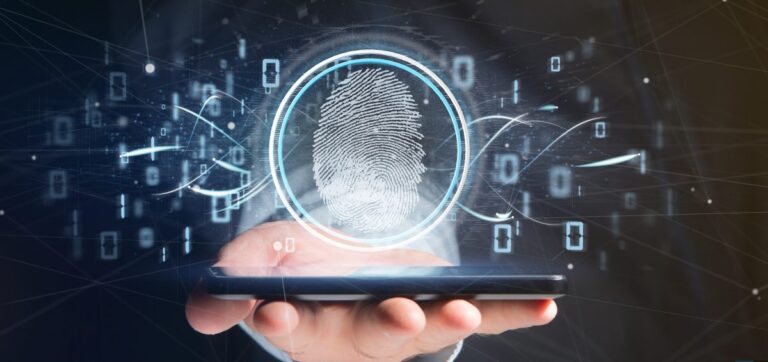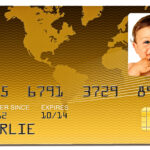Synthetic identity theft is a type of identity theft in which the perpetrator creates a new identity by combining real and fake information. This can include using a real Social Security number that has been stolen, along with a fake name, date of birth, and address.
The perpetrator of synthetic identity theft can use this new identity to commit fraud, such as opening fraudulent accounts, applying for loans, or renting property.
Synthetic identity theft is becoming increasingly common, as it is more difficult to detect than traditional identity theft. This is because the perpetrator may have all of the necessary documentation to appear legitimate.
There are many different types of synthetic identity theft.
10 Of Synthetic Identity Theft
Credit Card Fraud
Credit card fraud is a type of identity theft in which the perpetrator uses someone else’s credit card information to make unauthorized purchases. This can include using the victim’s credit card number, expiration date, and CVV code to make online purchases, or using the victim’s physical credit card to make purchases in person.
Synthetic identity theft is a type of identity theft in which the perpetrator creates a new identity by combining real and fake information. This can include using a real Social Security number that has been stolen, along with a fake name, date of birth, and address.
In the context of credit card fraud, synthetic identity theft can be used to:
- Open new credit card accounts in the victim’s name.
- Make unauthorized purchases on existing credit card accounts.
- Sell the victim’s credit card information to other criminals.
Credit card fraud committed using synthetic identity theft can be difficult to detect, as the perpetrator may have all of the necessary documentation to appear legitimate. However, there are a number of things that individuals can do to help prevent this type of fraud.
Individuals can help to prevent credit card fraud by:
- Being careful about what information they share online.
- Keeping their personal information secure.
- Monitoring their credit reports regularly.
- Only using credit cards in secure environments.
- Reporting any unauthorized charges to their credit card company immediately.
If you think you may have been a victim of credit card fraud, you should contact your credit card company immediately. You should also report the fraud to the Federal Trade Commission (FTC).
Here are some additional tips to help you protect yourself from credit card fraud:
- Place a fraud alert on your credit report: A fraud alert is a free service that tells creditors to take extra steps to verify your identity before opening a new account in your name.
- Place a credit freeze on your credit report: A credit freeze prevents creditors from accessing your credit report without your permission.
- Monitor your credit report regularly: Review your credit report for any unauthorized accounts or inquiries.
- Be aware of the signs of credit card fraud: Some of the signs of credit card fraud include:
- Receiving bills for charges that you did not make.
- Receiving calls from your credit card company about unauthorized charges.
- Noticing that your credit card balance has increased without your knowledge.
By following these tips, you can help to protect yourself from credit card fraud.
Loan Fraud
Loan fraud is a type of identity theft in which the perpetrator uses someone else’s personal information to obtain a loan. This can include using the victim’s name, date of birth, and Social Security number to apply for a loan, or using the victim’s credit report to qualify for a loan.
Synthetic identity theft is a type of identity theft in which the perpetrator creates a new identity by combining real and fake information. This can include using a real Social Security number that has been stolen, along with a fake name, date of birth, and address.
In the context of loan fraud, synthetic identity theft can be used to:
- Open new loan accounts in the victim’s name.
- Take out loans in the victim’s name without their knowledge.
- Use the victim’s credit report to qualify for loans that they would not otherwise be able to obtain.
Loan fraud committed using synthetic identity theft can be difficult to detect, as the perpetrator may have all of the necessary documentation to appear legitimate. However, there are a number of things that individuals can do to help prevent this type of fraud.
Individuals can help to prevent loan fraud by:
- Being careful about what information they share online.
- Keeping their personal information secure.
- Monitoring their credit reports regularly.
- Only applying for loans from reputable lenders.
- Reporting any unauthorized inquiries or accounts to their credit bureaus immediately.
If you think you may have been a victim of loan fraud, you should contact your credit bureaus immediately. You should also report the fraud to the Federal Trade Commission (FTC).
Here are some additional tips to help you protect yourself from loan fraud:
- Place a fraud alert on your credit report: A fraud alert is a free service that tells creditors to take extra steps to verify your identity before opening a new account in your name.
- Place a credit freeze on your credit report: A credit freeze prevents creditors from accessing your credit report without your permission.
- Monitor your credit report regularly: Review your credit report for any unauthorized accounts or inquiries.
- Be aware of the signs of loan fraud: Some of the signs of loan fraud include:
- Receiving bills for loans that you did not apply for.
- Receiving calls from creditors about loans that you did not apply for.
- Noticing that your credit report shows loans that you did not apply for.
By following these tips, you can help to protect yourself from loan fraud.
Employment Fraud
One type of employment fraud that is becoming increasingly common is synthetic identity theft. In synthetic identity theft, the perpetrator creates a new identity by combining real and fake information. This can include using a real Social Security number that has been stolen, along with a fake name, date of birth, and address.
Synthetic identity theft is often used to obtain employment, but it can also be used to obtain loans, credit cards, and other benefits. It can be difficult to detect synthetic identity theft, as the perpetrator may have all of the necessary documentation to appear legitimate.
There are a number of things that employers can do to protect themselves from employment fraud, including:
- Performing background checks: Employers should perform background checks on all new hires. This should include checking the applicant’s Social Security number, employment history, and education.
- Using identity verification services: There are a number of identity verification services available that can help employers to verify the identity of new hires.
- Being aware of the signs of fraud: Employers should be aware of the signs of employment fraud, such as applicants who are unwilling to provide documentation or who have a history of employment problems.
If you think that you may be a victim of employment fraud, you should contact the authorities immediately. You should also report the fraud to the Federal Trade Commission (FTC).
Here are some additional tips to help you protect yourself from employment fraud:
- Be careful about what information you share online: Do not share your Social Security number or other personal information online.
- Keep your software up to date: Software updates often include security patches that can help to protect your computer from malware.
- Be wary of job postings that seem too good to be true: If a job posting seems too good to be true, it probably is.
By following these tips, you can help to protect yourself from employment fraud.
Tax Fraud
Synthetic identity theft is a type of identity theft in which the perpetrator creates a new identity by combining real and fake information. This can include using a real Social Security number that has been stolen, along with a fake name, date of birth, and address.
Synthetic identity theft is often used to obtain employment, but it can also be used to commit tax fraud.
In the context of tax fraud, synthetic identity theft can be used to:
- File fraudulent tax returns in the name of the synthetic identity.
- Claim fraudulent tax refunds in the name of the synthetic identity.
- Claim fraudulent tax credits or deductions in the name of the synthetic identity.
Tax fraud committed using synthetic identity theft can be difficult to detect, as the perpetrator may have all of the necessary documentation to appear legitimate. However, there are a number of things that the IRS and taxpayers can do to help prevent this type of fraud.
The IRS has a number of programs in place to help prevent synthetic identity theft, including:
- The Identity Protection PIN (IP PIN) program: The IP PIN is a unique four-digit number that is assigned to taxpayers who are at risk of synthetic identity theft. The IP PIN is required to file a tax return electronically.
- The Identity Theft Tax Refund Protection (IPTRP) program: The IPTRP program allows taxpayers who have been victims of identity theft to place a hold on their tax refund. This helps to prevent the perpetrator from claiming a fraudulent tax refund in the victim’s name.
Taxpayers can also help to prevent synthetic identity theft by taking the following steps:
- Be careful about what information you share online.
- Keep your personal information secure.
- File your tax return electronically and use the IP PIN if you are eligible.
- Monitor your tax account for any unauthorized activity.
If you think you may have been a victim of synthetic identity theft, you should contact the IRS immediately. You should also report the fraud to the Federal Trade Commission (FTC).
Here are some additional tips to help you protect yourself from synthetic identity theft:
- Be aware of the signs of synthetic identity theft: Some of the signs of synthetic identity theft include:
- Receiving a tax refund that you did not expect.
- Receiving a letter from the IRS stating that you owe money, but you do not believe that you do.
- Having difficulty accessing your tax account online.
- Place a fraud alert on your credit report: A fraud alert is a free service that tells creditors to take extra steps to verify your identity before opening a new account in your name.
- Place a credit freeze on your credit report: A credit freeze prevents creditors from accessing your credit report without your permission.
- Monitor your credit report regularly: Review your credit report for any unauthorized accounts or inquiries.
By following these tips, you can help to protect yourself from synthetic identity theft and the tax fraud that can be committed using this method.
Social Security Fraud
Synthetic identity theft is a type of identity theft in which the perpetrator creates a new identity by combining real and fake information. This can include using a real Social Security number that has been stolen, along with a fake name, date of birth, and address.
Synthetic identity theft can be used to commit a variety of crimes, including social security fraud.
In the context of social security fraud, synthetic identity theft can be used to:
- File fraudulent claims for Social Security benefits.
- Use a stolen Social Security number to obtain employment.
- Open fraudulent bank accounts and credit cards.
Social security fraud committed using synthetic identity theft can be difficult to detect, as the perpetrator may have all of the necessary documentation to appear legitimate. However, there are a number of things that the Social Security Administration (SSA) and individuals can do to help prevent this type of fraud.
The SSA has a number of programs in place to help prevent synthetic identity theft, including:
- The Identity Theft Benefit Protection Plan (ITBPP): The ITBPP allows individuals who have been victims of identity theft to place a hold on their Social Security benefits. This helps to prevent the perpetrator from using the victim’s Social Security number to file fraudulent claims.
- The Social Security Number Verification Service (SSNVS): The SSNVS is a free service that allows individuals to verify the validity of a Social Security number. This can help to prevent individuals from being victims of synthetic identity theft.
Individuals can also help to prevent synthetic identity theft by taking the following steps:
- Be careful about what information you share online.
- Keep your personal information secure.
- Monitor your credit report regularly.
- Report any suspicious activity to the SSA immediately.
If you think you may have been a victim of synthetic identity theft, you should contact the SSA immediately. You should also report the fraud to the Federal Trade Commission (FTC).
Here are some additional tips to help you protect yourself from synthetic identity theft:
- Be aware of the signs of synthetic identity theft: Some of the signs of synthetic identity theft include:
- Receiving a Social Security benefit that you did not expect.
- Receiving a letter from the SSA stating that you owe money, but you do not believe that you do.
- Having difficulty accessing your Social Security account online.
- Place a fraud alert on your credit report: A fraud alert is a free service that tells creditors to take extra steps to verify your identity before opening a new account in your name.
- Place a credit freeze on your credit report: A credit freeze prevents creditors from accessing your credit report without your permission.
- Monitor your credit report regularly: Review your credit report for any unauthorized accounts or inquiries.
By following these tips, you can help to protect yourself from synthetic identity theft and the social security fraud that can be committed using this method.
Medical Identity Fraud
Medical identity fraud is a type of identity theft in which the perpetrator uses someone else’s personal information, such as their name, date of birth, and Social Security number, to obtain medical services.
This can include using the victim’s information to:
- File fraudulent insurance claims.
- Obtain prescription drugs.
- Receive medical treatment.
Medical identity fraud can have a number of negative consequences for victims, including:
- Financial loss: Victims may be responsible for paying for fraudulent medical services.
- Damage to credit: Victims may have their credit ruined if the perpetrator uses their information to open fraudulent accounts.
- Health risks: Victims may receive incorrect medical treatment if the perpetrator uses their information to obtain medical services.
Synthetic identity theft is a type of identity theft in which the perpetrator creates a new identity by combining real and fake information. This can include using a real Social Security number that has been stolen, along with a fake name, date of birth, and address.
In the context of medical identity fraud, synthetic identity theft can be used to:
- Create a new identity that is used to obtain medical services.
- Use a stolen Social Security number to obtain medical services.
- Open fraudulent medical accounts.
Medical identity fraud committed using synthetic identity theft can be difficult to detect, as the perpetrator may have all of the necessary documentation to appear legitimate. However, there are a number of things that individuals and healthcare providers can do to help prevent this type of fraud.
Individuals can help to prevent medical identity fraud by:
- Being careful about what information they share online.
- Keeping their personal information secure.
- Monitoring their credit report regularly.
- Reporting any suspicious activity to their healthcare provider immediately.
Healthcare providers can help to prevent medical identity fraud by:
- Verifying the identity of patients before providing medical services.
- Using fraud detection tools to identify potential cases of medical identity fraud.
- Reporting any suspicious activity to law enforcement immediately.
If you think you may have been a victim of medical identity fraud, you should contact your healthcare provider immediately. You should also report the fraud to the Federal Trade Commission (FTC).
Here are some additional tips to help you protect yourself from medical identity fraud:
- Be aware of the signs of medical identity fraud: Some of the signs of medical identity fraud include:
- Receiving medical bills that you did not expect.
- Receiving a letter from your healthcare provider stating that you owe money, but you do not believe that you do.
- Having difficulty accessing your medical records.
- Place a fraud alert on your credit report: A fraud alert is a free service that tells creditors to take extra steps to verify your identity before opening a new account in your name.
- Place a credit freeze on your credit report: A credit freeze prevents creditors from accessing your credit report without your permission.
- Monitor your credit report regularly: Review your credit report for any unauthorized accounts or inquiries.
By following these tips, you can help to protect yourself from medical identity fraud.
Child Identity Fraud
Child identity fraud is a type of identity theft in which the perpetrator uses a child’s personal information, such as their name, date of birth, and Social Security number, to obtain benefits or services.
This can include using the child’s information to:
- Apply for government benefits.
- Open fraudulent accounts.
- Commit crimes.
Child identity fraud can have a number of negative consequences for victims, including:
- Financial loss: Victims may be responsible for paying for fraudulent charges.
- Damage to credit: Victims may have their credit ruined if the perpetrator uses their information to open fraudulent accounts.
- Legal problems: Victims may be arrested or charged with crimes that they did not commit.
Synthetic identity theft is a type of identity theft in which the perpetrator creates a new identity by combining real and fake information. This can include using a real Social Security number that has been stolen, along with a fake name, date of birth, and address.
In the context of child identity fraud, synthetic identity theft can be used to:
- Create a new identity that is used to obtain benefits or services.
- Use a stolen Social Security number to obtain benefits or services.
- Open fraudulent accounts in the child’s name.
Child identity fraud committed using synthetic identity theft can be difficult to detect, as the perpetrator may have all of the necessary documentation to appear legitimate. However, there are a number of things that parents and guardians can do to help prevent this type of fraud.
Parents and guardians can help to prevent child identity fraud by:
- Being careful about what information they share about their children online.
- Keeping their children’s personal information secure.
- Monitoring their children’s credit reports regularly.
- Teaching their children about identity theft and how to protect themselves.
If you think your child may have been a victim of child identity fraud, you should contact the Federal Trade Commission (FTC) immediately. You should also report the fraud to your child’s credit bureaus.
Here are some additional tips to help you protect your child from child identity fraud:
- Place a fraud alert on your child’s credit report: A fraud alert is a free service that tells creditors to take extra steps to verify your child’s identity before opening a new account in their name.
- Place a credit freeze on your child’s credit report: A credit freeze prevents creditors from accessing your child’s credit report without your permission.
- Monitor your child’s credit report regularly: Review your child’s credit report for any unauthorized accounts or inquiries.
- Teach your child about identity theft and how to protect themselves: Talk to your child about the importance of protecting their personal information and how to spot signs of identity theft.
By following these tips, you can help to protect your child from child identity fraud.
Elderly Identity Fraud
Elderly identity fraud is a type of identity theft that specifically targets seniors. This type of fraud can be particularly devastating for seniors, as they may be less likely to be aware of the risks of identity theft and may have difficulty recovering from the financial and emotional damage that it can cause.
There are a number of reasons why elderly people are targeted by identity thieves. Seniors may be more likely to have:
- Older Social Security numbers: These numbers are more likely to be recycled, which means that they may be available for use by identity thieves.
- Retirement savings: Seniors may have significant retirement savings, which can be a tempting target for identity thieves.
- Medicare benefits: Medicare benefits can be a valuable source of income for seniors, and identity thieves may try to use them to obtain medical services or prescription drugs.
- Lack of awareness: Seniors may be less aware of the risks of identity theft and may not be as careful about protecting their personal information.
Synthetic identity theft is a type of identity theft in which the perpetrator creates a new identity by combining real and fake information. This can include using a real Social Security number that has been stolen, along with a fake name, date of birth, and address.
In the context of elderly identity fraud, synthetic identity theft can be used to:
- Create a new identity that is used to obtain benefits or services.
- Use a stolen Social Security number to obtain benefits or services.
- Open fraudulent accounts in the senior’s name.
Elderly identity fraud committed using synthetic identity theft can be difficult to detect, as the perpetrator may have all of the necessary documentation to appear legitimate. However, there are a number of things that seniors and their loved ones can do to help prevent this type of fraud.
Seniors and their loved ones can help to prevent elderly identity fraud by:
- Being careful about what information they share online.
- Keeping their personal information secure.
- Monitoring their credit reports regularly.
- Teaching seniors about identity theft and how to protect themselves.
If you think your elderly loved one may have been a victim of elderly identity fraud, you should contact the Federal Trade Commission (FTC) immediately. You should also report the fraud to your loved one’s credit bureaus.
Here are some additional tips to help you protect your elderly loved one from elderly identity fraud:
- Place a fraud alert on your loved one’s credit report: A fraud alert is a free service that tells creditors to take extra steps to verify your loved one’s identity before opening a new account in their name.
- Place a credit freeze on your loved one’s credit report: A credit freeze prevents creditors from accessing your loved one’s credit report without your permission.
- Monitor your loved one’s credit report regularly: Review your loved one’s credit report for any unauthorized accounts or inquiries.
- Teach your loved one about identity theft and how to protect themselves: Talk to your loved one about the importance of protecting their personal information and how to spot signs of identity theft.
By following these tips, you can help to protect your elderly loved one from elderly identity fraud.
Utilities Fraud
Utilities fraud is a type of identity theft in which the perpetrator uses someone else’s personal information, such as their name, date of birth, and Social Security number, to obtain utility services.
This can include using the victim’s information to:
- Open new utility accounts.
- Skip payments on existing utility accounts.
- Have utilities shut off in the victim’s name.
Utilities fraud can have a number of negative consequences for victims, including:
- Financial loss: Victims may be responsible for paying for utility services that they did not use.
- Damage to credit: Victims may have their credit ruined if the perpetrator uses their information to open fraudulent utility accounts.
- Disruption of service: Victims may have their utilities shut off, which can have a significant impact on their quality of life.
Synthetic identity theft is a type of identity theft in which the perpetrator creates a new identity by combining real and fake information. This can include using a real Social Security number that has been stolen, along with a fake name, date of birth, and address.
In the context of utilities fraud, synthetic identity theft can be used to:
- Create a new identity that is used to obtain utility services.
- Use a stolen Social Security number to obtain utility services.
- Open fraudulent utility accounts in the victim’s name.
Utilities fraud committed using synthetic identity theft can be difficult to detect, as the perpetrator may have all of the necessary documentation to appear legitimate. However, there are a number of things that consumers can do to help prevent this type of fraud.
Consumers can help to prevent utilities fraud by:
- Being careful about what information they share online.
- Keeping their personal information secure.
- Monitoring their credit reports regularly.
- Contacting their utility companies immediately if they suspect that someone has opened a fraudulent account in their name.
If you think you may have been a victim of utilities fraud, you should contact your utility companies immediately. You should also report the fraud to the Federal Trade Commission (FTC).
Here are some additional tips to help you protect yourself from utilities fraud:
- Place a fraud alert on your credit report: A fraud alert is a free service that tells creditors to take extra steps to verify your identity before opening a new account in your name.
- Place a credit freeze on your credit report: A credit freeze prevents creditors from accessing your credit report without your permission.
- Monitor your credit report regularly: Review your credit report for any unauthorized accounts or inquiries.
- Be aware of the signs of utilities fraud: Some of the signs of utilities fraud include:
- Receiving bills for utility services that you did not authorize.
- Having your utilities shut off unexpectedly.
- Receiving calls from utility companies about past due bills that you do not owe.
By following these tips, you can help to protect yourself from utilities fraud.
Synthetic Identity Creation
Synthetic identity creation is the process of creating a new identity by combining real and fake information. This can include using a real Social Security number that has been stolen, along with a fake name, date of birth, and address.
The perpetrator of synthetic identity theft can use this new identity to commit fraud, such as opening fraudulent accounts, applying for loans, or renting property.
Synthetic identity theft is becoming increasingly common, as it is more difficult to detect than traditional identity theft. This is because the perpetrator may have all of the necessary documentation to appear legitimate.
Here are some of the ways in which synthetic identity theft can be created:
- Stolen Social Security numbers: The perpetrator may steal a real Social Security number and use it to create a new identity.
- Fake Social Security numbers: The perpetrator may create a fake Social Security number that is not actually assigned to anyone.
- Combination of real and fake information: The perpetrator may combine real and fake information to create a new identity. For example, they could use a real name and date of birth, but a fake address and Social Security number.
There are a number of things that individuals can do to help prevent synthetic identity theft, including:
- Being careful about what information they share online.
- Keeping their personal information secure.
- Monitoring their credit reports regularly.
- Being aware of the signs of synthetic identity theft.
If you think you may have been a victim of synthetic identity theft, you should contact the Federal Trade Commission (FTC) immediately. You should also report the fraud to your credit bureaus.
Here are some additional tips to help you protect yourself from synthetic identity theft:
- Place a fraud alert on your credit report: A fraud alert is a free service that tells creditors to take extra steps to verify your identity before opening a new account in your name.
- Place a credit freeze on your credit report: A credit freeze prevents creditors from accessing your credit report without your permission.
- Monitor your credit report regularly: Review your credit report for any unauthorized accounts or inquiries.
- Be aware of the signs of synthetic identity theft: Some of the signs of synthetic identity theft include:
- Receiving bills for accounts that you did not open.
- Having your credit report show accounts that you did not open.
- Receiving calls from creditors about accounts that you did not open.
By following these tips, you can help to protect yourself from synthetic identity theft.
10 Q&A About Synthetic Identity Theft
- What is synthetic identity theft? Synthetic identity theft is a type of fraud where criminals combine real and fake information to create a new, fictitious identity. This identity is then used to open new accounts, apply for credit, or commit other types of fraud.
- How is synthetic identity theft different from traditional identity theft? While traditional identity theft involves stealing a person’s entire identity, synthetic identity theft involves creating a new identity by combining real and fake information. This makes it more difficult to detect and trace back to the victim.
- What are the most common types of synthetic identity theft? Credit card fraud, loan fraud, employment fraud, tax fraud, and social security fraud are some of the most common types of synthetic identity theft.
- How do criminals use synthetic identities? Criminals use synthetic identities to obtain credit, loans, employment, government benefits, and more. They can also use these identities to avoid detection by law enforcement or to commit other types of fraud.
- What are the consequences of synthetic identity theft for victims? Victims of synthetic identity theft may face financial losses, damaged credit scores, and difficulty obtaining credit or loans in the future. They may also be held responsible for fraudulent debts or be subject to legal consequences.
- How can I prevent synthetic identity theft? To prevent synthetic identity theft, be cautious when sharing personal information online, monitor your credit reports regularly, use strong passwords, and be alert to signs of fraud.
- What should I do if I suspect synthetic identity theft? If you suspect synthetic identity theft, report it to the appropriate authorities, such as your local police department, the Federal Trade Commission (FTC), and the relevant financial institutions. You should also place a fraud alert on your credit reports.
- Can synthetic identity theft be traced back to the victim? Synthetic identity theft can be difficult to trace back to the victim since it involves a combination of real and fake information. However, law enforcement and financial institutions may be able to track down the perpetrators with enough evidence.
- Are there any legal protections for victims of synthetic identity theft? In many countries, including the United States, there are legal protections for victims of identity theft. These protections may include the right to dispute fraudulent charges, the right to have fraudulent information removed from credit reports, and the right to recover damages.
- Is synthetic identity theft on the rise? Yes, synthetic identity theft has been on the rise in recent years, particularly as technology has made it easier for criminals to create and use synthetic identities.
Prevention and Reporting
To prevent synthetic identity theft:
- Be cautious about sharing personal information online. Only provide it when necessary and to trusted entities.
- Regularly monitor your credit reports for unusual activity.
- Use strong, unique passwords for all your online accounts.
- Be aware of common phishing scams and avoid clicking on suspicious links or opening unsolicited attachments in emails.
- Consider using a credit monitoring service to alert you of potential fraud.
If you suspect synthetic identity theft, take the following steps:
- Report it to your local police department and file a report.
- File a complaint with the Federal Trade Commission (FTC) at identitytheft.gov.
- Contact the fraud department of each of the three major credit bureaus (Experian, Equifax, and TransUnion) to place a fraud alert on your credit reports.
- Review your credit reports for any fraudulent accounts or charges and dispute them with the appropriate financial institutions.
- Change the passwords for all your online accounts, especially those associated with your financial information.















